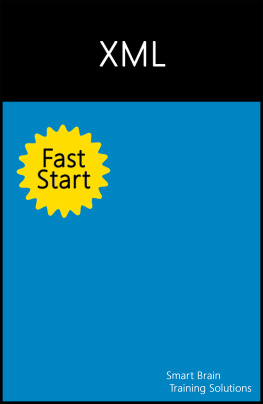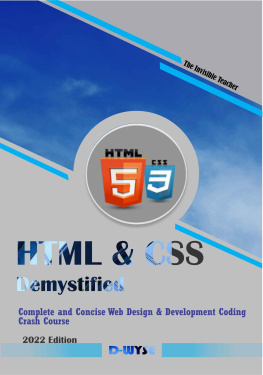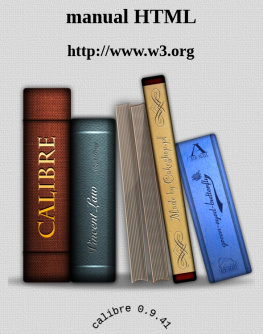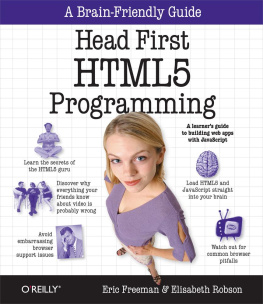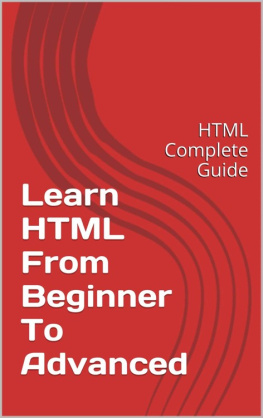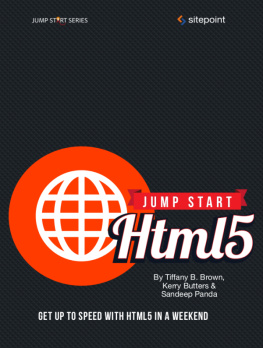Kevin Howard Goldberg - XML: Visual QuickStart Guide
Here you can read online Kevin Howard Goldberg - XML: Visual QuickStart Guide full text of the book (entire story) in english for free. Download pdf and epub, get meaning, cover and reviews about this ebook. year: 2008, publisher: Peachpit Press, genre: Computer. Description of the work, (preface) as well as reviews are available. Best literature library LitArk.com created for fans of good reading and offers a wide selection of genres:
Romance novel
Science fiction
Adventure
Detective
Science
History
Home and family
Prose
Art
Politics
Computer
Non-fiction
Religion
Business
Children
Humor
Choose a favorite category and find really read worthwhile books. Enjoy immersion in the world of imagination, feel the emotions of the characters or learn something new for yourself, make an fascinating discovery.

- Book:XML: Visual QuickStart Guide
- Author:
- Publisher:Peachpit Press
- Genre:
- Year:2008
- Rating:3 / 5
- Favourites:Add to favourites
- Your mark:
XML: Visual QuickStart Guide: summary, description and annotation
We offer to read an annotation, description, summary or preface (depends on what the author of the book "XML: Visual QuickStart Guide" wrote himself). If you haven't found the necessary information about the book — write in the comments, we will try to find it.
In the seven years since the first edition of XML: Visual QuickStart Guide was published, XML has taken its place next to HTML as a foundational language on the Internet. XML has become a very popular method for storing data and the most popular method for transmitting data between all sorts of systems and applications. The reason being, where HTML was designed to display information, XML was designed to manage it.
This book begins by showing you the basics of the XML language. Then, by building on that knowledge, additional and supporting languages and systems will be discussed. To get the most out of this book, you should be somewhat familiar with HTML, although you dont need to be an expert coder by any stretch. No other previous knowledge is required.
XML: Visual QuickStart Guide, 2nd Edition is divided into seven parts. Each part contains one or more chapters with step-by-step instructions that explain how to perform XML-related tasks. Wherever possible, examples of the concepts being discussed are displayed, and the parts of the examples on which to focus are highlighted.
The order of the book is intentionally designed to be an introduction to the fundamentals of XML, followed by discussions of related XML technologies.
In Part 1 of the book, you will learn how to create an XML document. Its relatively straightforward, and even more so if you know a little HTML.
Part 2 focuses on XSL, which is a set of languages designed to transform an XML document into something else: an HTML file, a PDF document, or another XML document. Remember, XML is designed to store and transport data, not display it.
Parts 3 and 4 of the book discuss DTD and XML Schema, languages designed to define the structure of an XML document. In conjunction with XML Namespaces (Part 5), you can guarantee that XML documents conform to a pre-defined structure, whether created by you or by someone else.
Part 6, Developments and Trends, details some of the up-and-coming XML-related languages, as well as a few new versions of existing languages.
Finally, Part 7 identifies some well-known uses of XML in the world today; some of which you may be surprised to learn.
This beginners guide to XML is broken down as follows:
Introduction
Chapter 1: Writing XML
Part 2: XSL
Chapter 2: XSLT
Chapter 3: XPath Patterns and Expressions
Chapter 4: XPath Functions
Chapter 5: XSL-FO
Part 3: DTD
Chapter 6: Creating a DTD
Chapter 7: Entities and Notations in DTDs
Chapter 8: Validation and Using DTDs
Part 4: XML Schema
Chapter 9: XML Schema Basics
Chapter 10: Defining Simple Types
Chapter 11: Defining Complex Types
Part 5: Namespaces
Chapter 12: XML Namespaces
Chapter 13: Using XML Namespaces
Part 6: Recent W3C Recommendations
Chapter 14: XSLT 2.0
Chapter 15: XPath 2.0
Chapter 16: XQuery 1.0
Part 7: XML in Practice
Chapter 17: Ajax, RSS, SOAP and More
Kevin Howard Goldberg: author's other books
Who wrote XML: Visual QuickStart Guide? Find out the surname, the name of the author of the book and a list of all author's works by series.

